Filter by
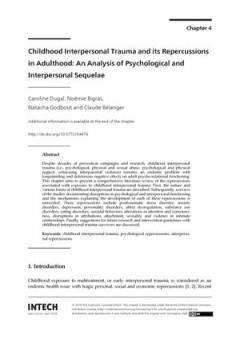
Childhood interpersonal Trauma and Its Repercussions in Adulthood An Analysi…
Despite decades of prevention campaigns and research, childhood interpersonal trauma (i.e., psychological, physical and sexual abuse, psychological and physical neglect, witnessing interparental violence) remains an endemic problem with longstanding and deleterious negative effects on adult psycho-relational functioning. This chapter aims to present a comprehensive literature review of the repe…
- Edition
- -
- ISBN/ISSN
- 9789535127284
- Collation
- -
- Series Title
- -
- Call Number
- -
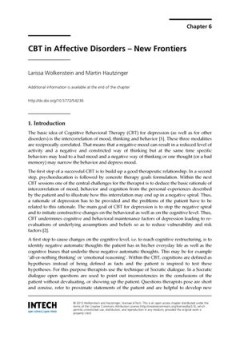
CBT in Affective Disorders – New Frontiers
CBT in Affective Disorders – New Frontiers
- Edition
- -
- ISBN/ISSN
- 9789535111474
- Collation
- -
- Series Title
- -
- Call Number
- -
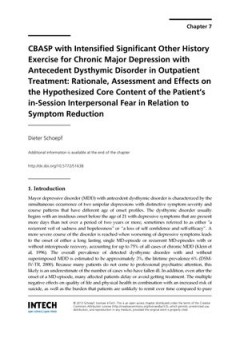
Cbasp With intensified Significant Other History Exercise For Chronic Major D…
CBASP with Intensified Significant Other History Exercise for Chronic Major Depression with Antecedent Dysthymic Disorder in Outpatient Treatment: Rationale, Assessment and Effects on the Hypothesized Core Content of the Patient’s in-Session Interpersonal
- Edition
- -
- ISBN/ISSN
- 9789535111474
- Collation
- -
- Series Title
- -
- Call Number
- -

Altered Associative Learning and Learned Helplessness in Major Depression
Altered Associative Learning and Learned Helplessness in Major Depression
- Edition
- -
- ISBN/ISSN
- 9789535111474
- Collation
- -
- Series Title
- -
- Call Number
- -

Adaptation of Cognitive Behavioral Analysis System of Psychotherapy in a 29 Y…
Adaptation of Cognitive Behavioral Analysis System of Psychotherapy in a 29 Year Old Female Patient with Chronic Major Depression and Antecedent Dysthymic Disorder Who Switched Under Combined SSRI/CBASP Outpatient Treatment into Bipolarity: A Case Report
- Edition
- -
- ISBN/ISSN
- 9789535111474
- Collation
- -
- Series Title
- -
- Call Number
- -

Acute Stress Disorder Diagnosis, Clusters, and Symptoms as Predictors of Post…
Violent crimes represent a societal problem, and victims, namely women, often develop posttraumatic stress disorder (PTSD). Previous studies have identified acute stress disorder (ASD) as a predictor of PTSD, as well as dissociation. However, there are some inconsistencies regarding which cluster or symptom has better predictive power, and the impact of gender is still unknown in victims of vio…
- Edition
- -
- ISBN/ISSN
- 9789535127284
- Collation
- -
- Series Title
- -
- Call Number
- -
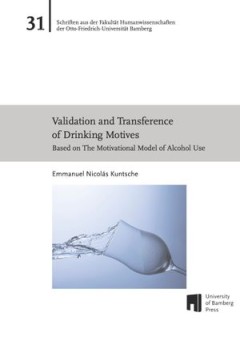
Validation and Transference of Drinking Motives Based on the Motivational Mo…
This work deals with three basic assumptions in contemporary drinking motive research. The first is that the four-dimensional model of drinking motives and links between the motive dimensions and alcohol use hold true among adolescents from different countries. The results of three empirical studies revealed striking cross-countries consistencies. This concerned not only the confirmation of the…
- Edition
- -
- ISBN/ISSN
- 9783863096670
- Collation
- -
- Series Title
- -
- Call Number
- -
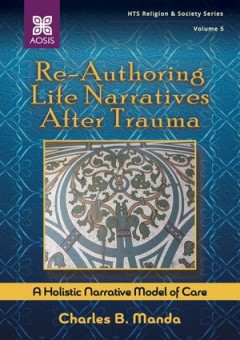
Re-Authoring Life Narratives After Trauma A Holistic Narrative Model of Care
Re-authoring Life Narratives after Trauma is an interdisciplinary, specialist resource for traumatic stress researchers, practitioners and frontline workers who focus their research and work on communities from diverse religious backgrounds that are confronted with trauma, death, illness and other existential crises. This book aims to argue that the biopsychosocial approach is limited in scope …
- Edition
- -
- ISBN/ISSN
- 9781928396918
- Collation
- -
- Series Title
- -
- Call Number
- -
 Computer Science, Information & General Works
Computer Science, Information & General Works  Philosophy & Psychology
Philosophy & Psychology  Religion
Religion  Social Sciences
Social Sciences  Language
Language  Pure Science
Pure Science  Applied Sciences
Applied Sciences  Art & Recreation
Art & Recreation  Literature
Literature  History & Geography
History & Geography